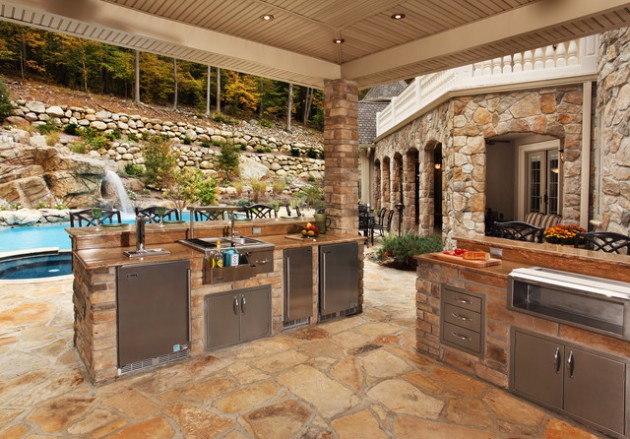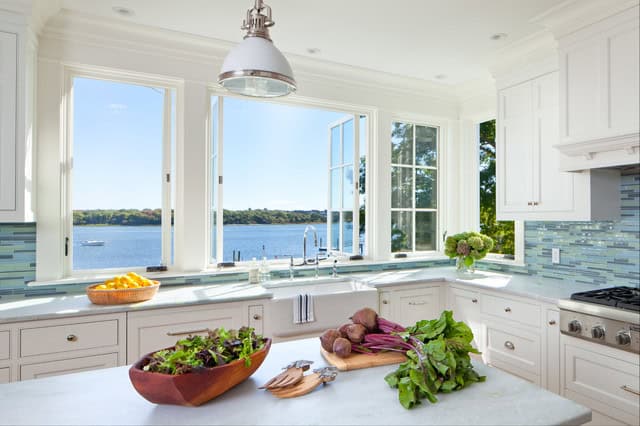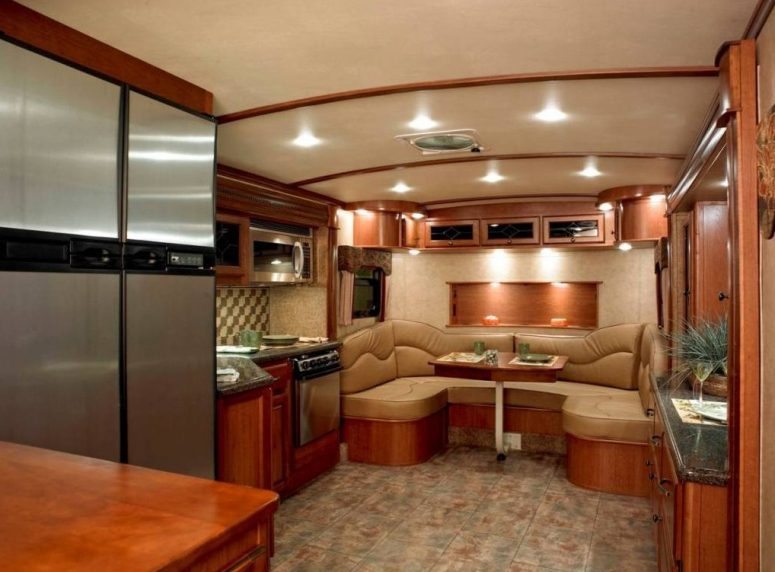The kitchen sink area is one of the most crucial parts of any kitchen. It’s where you prepare food and wash dishes, and often, it’s the central hub of the kitchen. Designing this space effectively can significantly enhance the functionality and aesthetics of your kitchen. This guide will walk you through the various aspects of kitchen sink area design, ensuring you make informed decisions.

Choosing the Right Sink
Types of Sinks
Selecting the right type of sink is paramount in kitchen sink area design. There are several types of sinks to consider, including undermount, top mount, farmhouse, and integrated sinks. Undermount sinks are installed beneath the countertop, providing a seamless look and making countertop cleaning easier. Top mount sinks, also known as drop-in sinks, are installed above the countertop and are often easier to install. Farmhouse sinks, characterized by their deep basins and exposed fronts, add a rustic touch and offer ample space for washing large pots and pans. Integrated sinks are made from the same material as the countertop, offering a uniform look.
Material Selection
The material of the sink affects both its durability and appearance. Stainless steel is a popular choice due to its durability, affordability, and ease of maintenance. Granite composite sinks offer a stylish look and are resistant to scratches and stains. Porcelain sinks provide a classic look but require more care to avoid chipping and staining. Copper sinks are unique and develop a natural patina over time, but they require regular maintenance to keep them looking their best.

Size and Configuration
The size of your sink should correspond to the size of your kitchen and your specific needs. A single-bowl sink offers more space for washing large items, while a double-bowl sink provides separate areas for washing and rinsing. Some homeowners opt for a triple-bowl sink for maximum versatility. Consider the depth of the sink as well; deeper sinks can accommodate more dishes but may be less comfortable to use for extended periods.
Faucet Compatibility
When choosing a sink, it’s essential to consider the type of faucet you’ll be using. Some sinks come with pre-drilled holes, while others do not. Ensure that the sink you choose is compatible with your preferred faucet style, whether it’s a single-handle, double-handle, or pull-down faucet. The height and reach of the faucet should also match the sink’s dimensions to ensure optimal functionality.

Placement and Ergonomics
Work Triangle Concept
The work triangle concept is a foundational principle in kitchen design, emphasizing the placement of the sink, stove, and refrigerator. Ideally, these three elements should form a triangle, minimizing the distance between them to enhance efficiency. The sink, often considered the most frequently used element, should be centrally located within this triangle to ensure easy access to other workstations.
Countertop Space
Ample countertop space around the sink is crucial for food preparation and dishwashing. Ensure there is enough room on both sides of the sink for placing dishes, cutting boards, and other kitchen essentials. A minimum of 18 inches of countertop space on one side and 24 inches on the other is recommended for optimal functionality. This space allows you to move freely and keep your kitchen organized.
Height Considerations
The height of the sink should be comfortable for the primary user to avoid strain during prolonged use. Standard sink height ranges from 36 to 39 inches from the floor to the countertop. However, if the primary user is shorter or taller than average, you may need to adjust the height accordingly. Ergonomic design ensures that kitchen tasks are performed efficiently and comfortably.
Lighting
Proper lighting around the sink area is essential for both functionality and aesthetics. Task lighting, such as under-cabinet lights or pendant lights, can illuminate the sink area, making it easier to see while washing dishes or preparing food. Consider installing dimmable lights to adjust the brightness according to your needs and create a cozy ambiance in the kitchen.

Storage Solutions
Under-Sink Cabinets
The space under the sink is often underutilized but offers great storage potential. Installing custom cabinets or shelves can maximize this area. Consider adding pull-out shelves or baskets to make it easier to access cleaning supplies, trash bins, and recycling containers. Waterproof and moisture-resistant materials are recommended to prevent damage from potential leaks.
Above-Sink Storage
Using the space above the sink for storage can free up valuable countertop space. Install open shelves or cabinets to store frequently used items like dishes, glasses, and spices. Floating shelves can add a modern touch to your kitchen while providing practical storage solutions. Ensure that these shelves are sturdy and properly anchored to support the weight of the items.
Sink Accessories
Sink accessories, such as drying racks, cutting boards, and colanders, can enhance the functionality of your sink area. These accessories are designed to fit over the sink, providing additional workspace and making kitchen tasks more efficient. Some sinks come with built-in accessories, while others offer add-on options. Choose accessories that match your sink’s dimensions and your cooking habits.
Drawer Organization
Drawers near the sink area can be used to store utensils, dishcloths, and other kitchen essentials. Consider installing drawer dividers or organizers to keep items neatly arranged and easily accessible. Soft-close drawers prevent slamming and add a touch of luxury to your kitchen. Keep frequently used items in the top drawers and less frequently used items in the lower drawers.

Material and Finish Selection
Countertop Materials
The choice of countertop material around the sink affects both the aesthetics and functionality of your kitchen. Popular options include granite, quartz, marble, and laminate. Granite is durable and resistant to heat and scratches, making it a great choice for busy kitchens. Quartz offers a non-porous surface that is easy to clean and maintain. Marble provides a luxurious look but requires more care to prevent staining and etching. Laminate is an affordable option available in a wide range of colors and patterns.
Sink Materials
As mentioned earlier, the material of the sink plays a significant role in its durability and appearance. Stainless steel sinks are versatile and match most kitchen styles. Granite composite sinks offer a sleek look and are resistant to scratches and stains. Porcelain sinks provide a timeless appeal but require careful maintenance. Copper sinks are unique and develop a natural patina over time, adding character to your kitchen.
Faucet Finishes
The finish of your faucet can complement or contrast with the sink and countertop materials. Common finishes include chrome, stainless steel, brushed nickel, and oil-rubbed bronze. Chrome is shiny and easy to clean, while stainless steel offers a modern look. Brushed nickel provides a soft, matte finish that hides fingerprints and water spots. Oil-rubbed bronze adds a vintage touch to your kitchen and pairs well with farmhouse sinks.
Coordinating with Cabinets
Coordinating the materials and finishes of the sink area with your cabinets creates a cohesive look in your kitchen. Consider matching the cabinet hardware with the faucet finish for a unified design. If your cabinets are a bold color, opt for a neutral sink and countertop to balance the overall aesthetic. Conversely, a statement sink or countertop can add visual interest to a kitchen with neutral cabinets.

Enhancing Functionality
Multi-Functional Faucets
Multi-functional faucets can significantly enhance the usability of your kitchen sink area. Pull-down or pull-out faucets with spray functions allow for greater flexibility in rinsing dishes and cleaning the sink. Touchless faucets offer convenience and improve hygiene by reducing the need to touch handles with dirty hands. Some faucets also include built-in water filters for improved water quality.
Built-In Soap Dispensers
A built-in soap dispenser can keep your countertop clutter-free and make dishwashing more convenient. These dispensers are typically installed next to the faucet and can be refilled from above or below the counter. Choose a dispenser that matches the finish of your faucet for a cohesive look. Some sinks come with pre-drilled holes for soap dispensers, making installation easier.
Water Filtration Systems
Installing a water filtration system under your sink ensures that you have access to clean, filtered water for cooking and drinking. There are various types of filtration systems available, including carbon filters, reverse osmosis systems, and UV purifiers. Choose a system that fits your needs and budget, and ensure that it is compatible with your sink and plumbing.
Garbage Disposals
A garbage disposal unit can enhance the functionality of your sink area by making it easier to dispose of food waste. These units are installed under the sink and connected to the drain. They grind food waste into small particles that can be safely washed down the drain. When choosing a garbage disposal, consider the horsepower, noise level, and compatibility with your plumbing.

Design and Aesthetics
Color Schemes
The color scheme of your kitchen sink area should complement the overall design of your kitchen. Neutral colors like white, gray, and beige create a timeless look and can be easily updated with accessories and decor. Bold colors like navy, emerald, and black add a modern touch and make a statement. Consider the colors of your cabinets, countertops, and backsplash when choosing the sink and faucet finishes.
Tile Backsplashes
A tile backsplash can enhance the aesthetics of your sink area and protect the wall from water damage. There are countless options for backsplash designs, including subway tiles, mosaic tiles, and patterned tiles. Choose a backsplash that complements the color scheme and style of your kitchen. Glass tiles add a modern touch, while natural stone tiles provide a rustic look.
Decorative Fixtures
Decorative fixtures, such as lighting, faucets, and cabinet hardware, can add personality to your kitchen sink area. Pendant lights above the sink create a focal point and provide task lighting. Choose a faucet with unique details or an interesting finish to add visual interest. Coordinating the cabinet hardware with the faucet and lighting fixtures creates a cohesive design.
Personal Touches
Adding personal touches to your sink area can make your kitchen feel more inviting and reflect your style. Display decorative items like plants, artwork, or pottery on open shelves or windowsills. Choose dish towels and soap dispensers that match your color scheme and add a pop of color. Incorporating personal elements makes your kitchen more than just a functional space.

Common Mistakes to Avoid
Overlooking Practicality for Aesthetics
One common mistake in kitchen sink area design is prioritizing aesthetics over practicality. While a beautiful sink area is important, it should not come at the expense of functionality. Ensure that your sink, faucet, and accessories are easy to use and maintain. Choose materials that are durable and suited to your lifestyle.
Inadequate Counter Space
Failing to allocate sufficient counter space around the sink can hinder kitchen activities. Ensure there is enough room on both sides of the sink for food preparation and dishwashing. Consider the flow of work in your kitchen and how the sink area fits into it. Ample counter space improves efficiency and keeps your kitchen organized.
Poor Lighting
Insufficient lighting around the sink area can make kitchen tasks difficult and increase the risk of accidents. Ensure that the sink area is well-lit with task lighting, such as under-cabinet lights or pendant lights. Consider adding dimmable lights to adjust the brightness according to your needs. Proper lighting enhances both functionality and aesthetics.
Ignoring Ergonomics
Ignoring ergonomic principles in sink area design can lead to discomfort and strain. Ensure that the height of the sink is comfortable for the primary user and that there is enough space to move freely. Consider the placement of cabinets, drawers, and shelves to make sure they are easily accessible. An ergonomic design improves efficiency and reduces the risk of injury.
Mismatched Materials and Finishes
Choosing materials and finishes that do not coordinate can create a disjointed look in your kitchen. Ensure that the sink, faucet, countertop, and cabinet hardware complement each other. Consider the overall style and color scheme of your kitchen when making selections. A cohesive design creates a harmonious and visually appealing space.
Skimping on Quality
Opting for low-quality materials and fixtures can lead to frequent repairs and replacements. Invest in high-quality sinks, faucets, and accessories that will stand the test of time. While quality products may cost more upfront, they often save money in the long run by reducing maintenance and replacement costs.

What is the best material for a kitchen sink?
The best material for a kitchen sink depends on your needs and preferences. Stainless steel sinks are durable, affordable, and easy to maintain, making them a popular choice. Granite composite sinks are resistant to scratches and stains and offer a stylish look. Porcelain sinks provide a classic appeal but require more care to avoid chipping and staining. Copper sinks are unique and develop a natural patina over time, adding character to your kitchen.
How do I choose the right size sink for my kitchen?
Choosing the right size sink involves considering the size of your kitchen and your specific needs. A single-bowl sink offers more space for washing large items, while a double-bowl sink provides separate areas for washing and rinsing. Measure the available space in your countertop and ensure that the sink size is proportionate to your kitchen. Consider the depth of the sink as well; deeper sinks can accommodate more dishes but may be less comfortable to use for extended periods.
What is the work triangle, and why is it important?
The work triangle is a kitchen design principle that emphasizes the placement of the sink, stove, and refrigerator. These three elements should form a triangle, minimizing the distance between them to enhance efficiency. The work triangle ensures that the kitchen layout is functional and allows for smooth movement between different workstations. Proper placement of the sink within this triangle is crucial for optimizing workflow.
How can I maximize storage around the sink area?
Maximizing storage around the sink area involves utilizing under-sink cabinets, above-sink storage, and sink accessories. Install custom cabinets or shelves under the sink to store cleaning supplies, trash bins, and recycling containers. Use open shelves or cabinets above the sink for frequently used items like dishes and glasses. Consider sink accessories like drying racks and cutting boards that fit over the sink, providing additional workspace. Organize drawers near the sink with dividers or organizers to keep utensils and dishcloths neatly arranged.
What are the benefits of a multi-functional faucet?
A multi-functional faucet enhances the usability of your kitchen sink area by offering greater flexibility and convenience. Pull-down or pull-out faucets with spray functions allow for easier rinsing of dishes and cleaning of the sink. Touchless faucets improve hygiene by reducing the need to touch handles with dirty hands. Some faucets include built-in water filters, providing access to clean, filtered water for cooking and drinking. Multi-functional faucets can make kitchen tasks more efficient and enjoyable.
How do I coordinate the sink area with the rest of my kitchen?
Coordinating the sink area with the rest of your kitchen involves matching materials, finishes, and colors. Choose a sink material that complements your countertop and cabinet finishes. Match the faucet finish with the cabinet hardware for a unified look. Consider the overall style and color scheme of your kitchen when selecting the sink and accessories. A cohesive design creates a harmonious and visually appealing kitchen.

Related Posts: